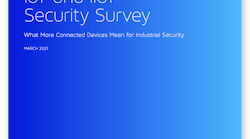Despite the clear benefits of IIoT, the path to its full integration isn't without hurdles. Given the interconnected nature of IIoT devices, they are potential gateways for cyber threats. The essence of IIoT, built on openness and interconnectivity, can, paradoxically, introduce new vulnerabilities to illicit information harvesting, data leaks, and intellectual property theft.
In the arena of IIoT risk management and cybersecurity, the vast majority of organizations are barely flexing their muscles. They:
- Exist at a nascent stage of IIoT cybersecurity capabilities, with investments pouring in, deployments taking shape and benefits only just beginning to sprout.
- Possess only a moderate grasp of IIoT cybersecurity, still in the process of gauging the potential hazards that their IoT deployments may inflict on their organizational framework.
- Forego the practice of conducting systematic (annual) IIoT cybersecurity risk assessments, opting instead for a sporadic, case-by-case approach.
- Have either sparingly established or outright neglected the implementation of critical security controls for IoT deployments.
Staggeringly, on average, upwards of 75% of organizations are only dipping their toes into the waters of IoT cybersecurity risk mitigation practices and technologies, with their efforts still at the experimental or pilot stages.
The solution? It is crucial to incorporate robust cybersecurity protocols and adhere to secure-by-design principles from the outset of any IIoT strategy. Here are the nine solutions - ordered by the extent of their impact.
To read the full article, see "9 Cybersecurity Protocols to Include in Your IIoT Strategy", which originally appeared on IndustryWeek, an Endeavor Business Media partner site.






